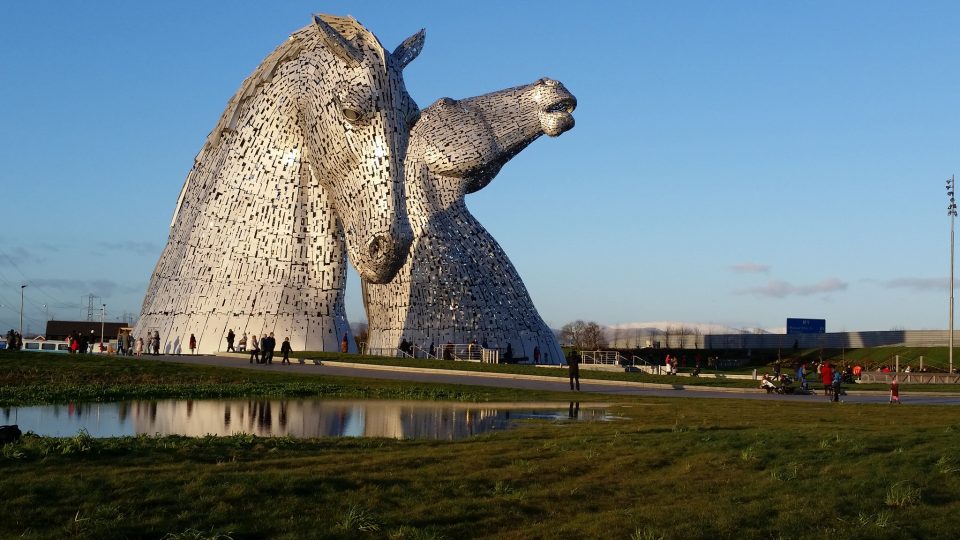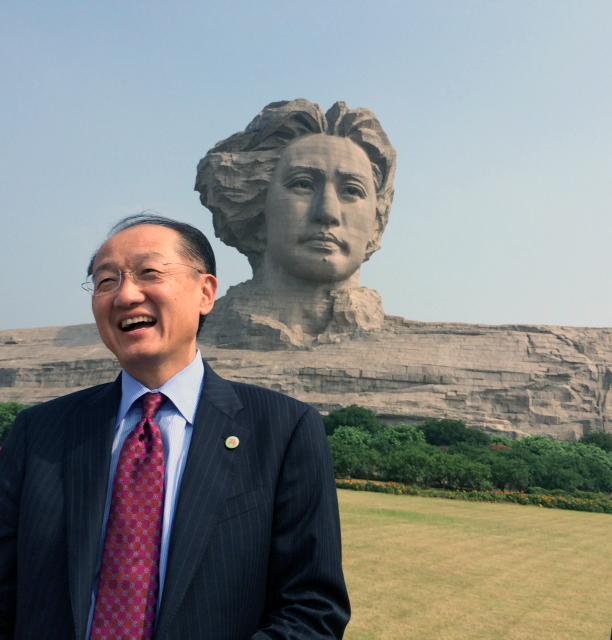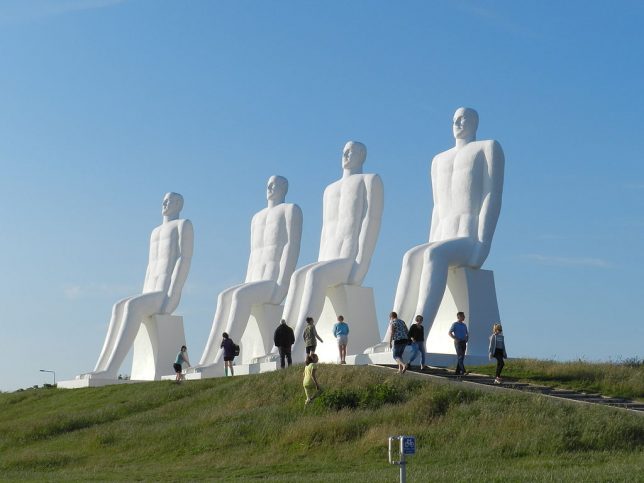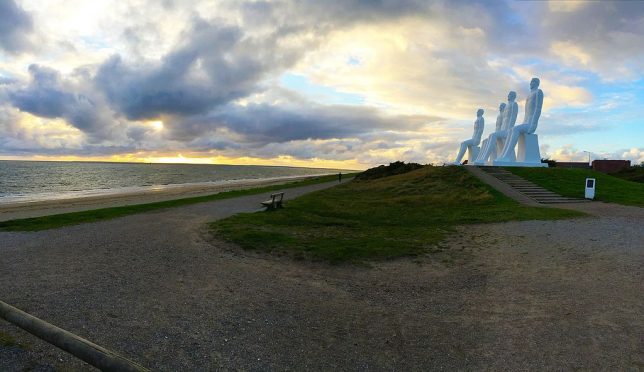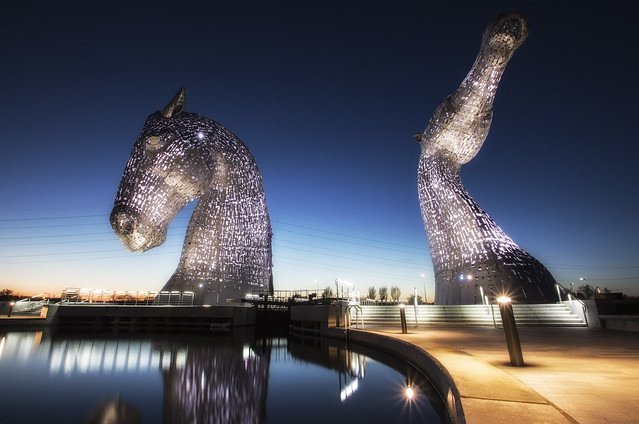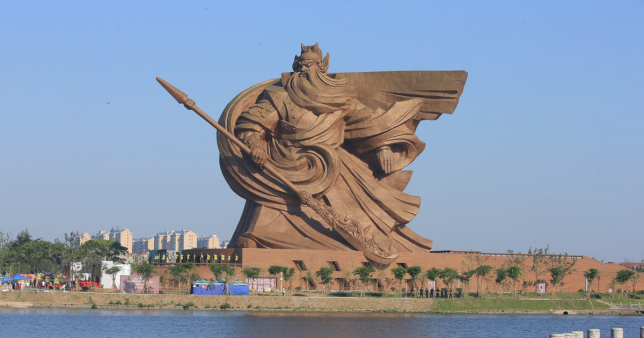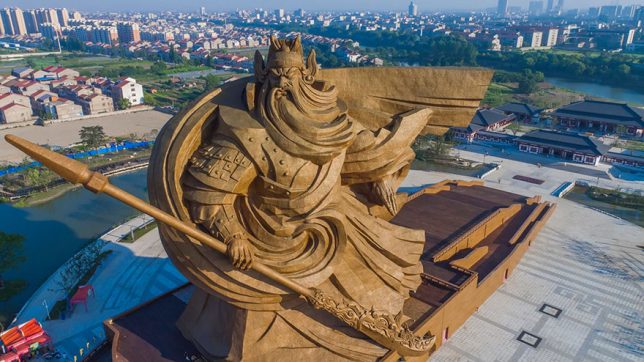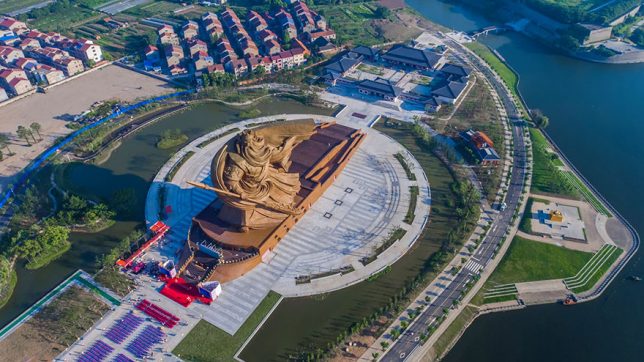Everyone knows about the Statue of Liberty, the Easter Island Moai heads, Mount Rushmore and the Sphinxes of Ancient Egypt, but not all monstrous monuments were built in centuries past. Colossal statues of even larger proportions are still built all over the world in modern times, from the many massive Buddhas of Asia to mythological creatures like merlions and shapeshifting horses. Though some of them are among the world’s tallest statues, these 7 are relatively lesser known, built between 1994 and 2017. (Of course, the former Soviet Union boasts so many oversized monuments, they’re in a category of their own.)
Mao Zedong’s Head, Changsha, China
The massive head of young Chinese dictator Mao Zedong gazes down at the city of Changsha, seemingly bursting from the rock in a grassy park. Built in 2007 by the Hunan People’s Government, it strays from the usual balding representations of Mao’s look later in life. It’s 105 feet tall and made of 8,000 pieces of granite, and here’s the kicker: it cost $300 million. Another giant statue of Chairman Mao, known as ‘Mega Mao,’ was built in Henan province in 2016 ridiculed so much for its excess that it was torn down soon after it went viral on the internet.
The Man Meets the Sea, Denmark
Four stark white figures stand 30 feet tall while seated, standing out when the sky is blue and virtually disappearing in cloudy weather. The ‘Man Meets the Sea’ sculpture is visible to ships arriving in or departing from Esbjerg Harbor on the southwest coast of Denmark. Created by Svend Wiig Hansen in celebration of the town of Esbjerg’s 100th anniversary as an independent municipality in 1994, the sculpture “portrays the meeting between pure, unspoilt mankind and nature. Man, innocent as from his mother’s womb. Man before rising up and beginning to act. That, according to Wiig Hansen, was where things started to go wrong – when man got ‘dirt’ on his hands.”
The Kelpies at Helix Park, Scotland
A pair of horse heads known as The Kelpies by sculptor Andy Scott emerged near the River Carron in the Falkirk Council Area of Scotland in October 2013 to celebrate a new extension of the Forth and Clyde Canal at Helix Park. Named for mythological Scottish shapeshifter that transform from horses into hooded humans, the statues pay tribute to the many horses that have helped Scotland become what it is today. Scott first created 9-foot-high versions in his studio, which were scanned by lasers and reproduced by steel fabricators. He envisions them as “water-borne, towering gateways into The Helix, the Forth and Clyde Canal and Scotland, translating the legacy of the area into proud equine guardians.”
Guan Yu God of War, Jingzhou, China
Quite stunning both for its proportions and its artistic merit, this enormous depiction of the Chinese god of war looks like he could start swinging his ‘Green Dragon Crescent Blade’ around at any second. Unveiled in 2017 in his namesake park in Jingshou, China, Guan Yu stands 190 feet tall, weighs over 1,320 tons and consists of over 4,000 bronze strips. He stands atop an 86,111-square-foot museum. Though he’s now been deified, Guan Yu was a real person, a general serving under warlord Liu Bei in the late Eastern Han dynasty. Known as a great warrior, he governed the Jing Province for seven years before he was captured and executed by a power-seeking betrayer in 220 C.E. His real-life exploits are rather overshadowed by myths that have sprung up around him, depicting him as the ultimate human embodiment of strength, loyalty and righteousness.
